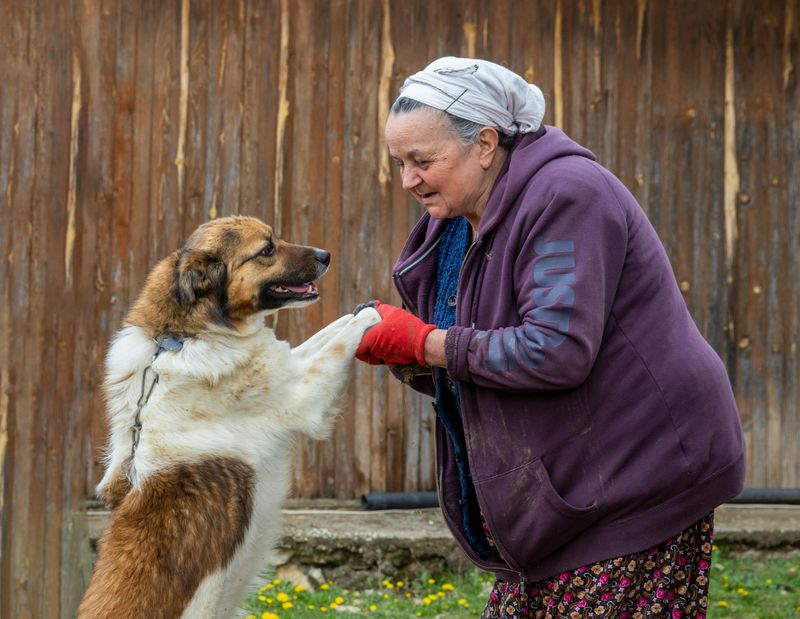Dogs have been our faithful companions for centuries, yet many myths about them persist, leading to misunderstandings and sometimes even harmful practices. This blog post aims to debunk ten common myths that many dog owners still believe, providing clarity and better understanding for a healthier relationship with our canine friends. By addressing these misconceptions, we hope to foster a more informed and compassionate approach to dog ownership.
Myth 1: Dogs Only Wag Their Tails When Happy
Dogs communicate a range of emotions through tail wagging, not just happiness. A wagging tail can indicate excitement, fear, or even aggression, depending on the speed, direction, and position of the wag. For instance, a low, slow wag might signal insecurity, whereas a high, rapid wag may indicate excitement or even a challenge. Understanding these nuances helps in accurately interpreting a dog’s mood, ensuring safer interactions. Observing other body language cues in conjunction with tail wagging provides a fuller picture of what a dog is feeling. Being aware of these subtleties keeps both dogs and humans safe and happy.
Myth 2: A Warm Nose Means a Dog is Sick
A dog’s nose can vary in temperature and moisture for many reasons, not just illness. Environmental factors, like weather changes or the dog’s recent activity, can influence nose warmth. A warm or dry nose is often normal and not an automatic sign of sickness. It’s more important to observe other symptoms like lethargy or appetite loss for health concerns. Regular monitoring of a dog’s overall behavior and condition provides better health insights. Consulting a vet when unsure ensures accurate diagnosis and peace of mind. Avoid jumping to conclusions based solely on nose temperature.
Myth 3: Dogs See in Black and White
Dogs don’t see in black and white; they perceive colors, albeit differently than humans. They see shades of blue and yellow and have difficulty distinguishing between red and green. This color vision is due to the different structure of their retinas. Understanding dogs’ unique color perception can aid in training and selecting toys. Using colors dogs can see clearly, like blue, enhances their engagement during play. Recognizing their visual world helps in creating more enriching environments. This knowledge dispels the black-and-white myth and highlights the importance of considering a dog’s sensory experience.
Myth 4: Dogs Eat Grass When They’re Sick
While it’s a common belief that dogs eat grass when sick, many do so when healthy too. Grass-eating can be a normal behavior, possibly for digestive benefits or simply because they enjoy it. Observing a dog’s behavior after eating grass can provide clues; if they vomit frequently after, a vet consultation may be wise. However, occasional grass-eating without other symptoms is typically harmless. It’s essential to ensure the grass is free from pesticides. Understanding this behavior helps prevent unnecessary worry and supports a relaxed attitude towards this canine habit.
Myth 5: One Dog Year Equals Seven Human Years
The notion that one dog year equals seven human years is an oversimplification. Dogs age more quickly in their early years and the pace slows down as they grow older. For example, a one-year-old dog is roughly equivalent to a 15-year-old human, while a two-year-old dog is about 24 in human years. Breed and size also impact aging rates. Smaller breeds often live longer and age differently than larger breeds. Understanding this helps in providing appropriate care at different life stages. Tailoring nutrition, exercise, and healthcare based on accurate age comparisons enhances a dog’s well-being.
Myth 6: Dogs’ Mouths are Cleaner than Humans’
The belief that dogs’ mouths are cleaner than humans’ is misleading. Both contain bacteria, but the types differ. Dogs’ mouths harbor microorganisms not typically found in humans, some of which can be harmful. This myth likely arose from observing dogs’ ability to lick wounds without causing infection, but it doesn’t imply cleanliness. Regular dental care for dogs, like brushing and vet check-ups, is crucial for oral health. It’s essential to maintain hygiene standards to prevent transmission of bacteria between dogs and humans. Debunking this myth promotes better pet health and human safety practices.
Myth 7: You Can’t Teach an Old Dog New Tricks
Contrary to the saying, older dogs can learn new tricks with patience and the right approach. Age isn’t a barrier to learning; rather, it may require adapting training methods to suit the dog’s pace and health. Positive reinforcement, like treats and praise, encourages learning regardless of age. Engaging in training sessions also strengthens the bond between dog and owner. Older dogs often benefit from mental stimulation, which can improve their overall well-being. By tailoring experiences to the individual dog, owners can successfully teach old dogs new tricks, defying age-related stereotypes.
Myth 8: Dogs Feel Guilty After Misbehaving
The “guilty” look dogs give after misbehaving is often a reaction to their owner’s cues rather than genuine guilt. Dogs are adept at reading human emotions and responding accordingly. When scolded, their submissive postures may appear as guilt, but it’s usually appeasement. Understanding this helps in addressing unwanted behavior more effectively. Instead of attributing human emotions to dogs, focusing on positive reinforcement and clear communication improves behavior management. This insight fosters a more empathetic approach to understanding and training dogs, recognizing their unique emotional expressions.
Myth 9: Dogs Hate Cats
The belief that dogs inherently hate cats is a stereotype. Dogs and cats can coexist peacefully, and many form close bonds. Whether they get along depends on individual personalities, socialization, and training. Introducing them gradually and positively can foster harmony. Observing interactions and intervening if necessary ensures both pets feel secure. Providing separate spaces and resources like bowls and beds helps prevent competition. Promoting positive associations through treats and praise during encounters encourages friendship. By understanding and respecting their differences and needs, dogs and cats can live happily together.
Myth 10: Dogs Can Eat All Human Foods
Despite many dogs’ eagerness, not all human foods are safe for them. Some, like chocolate, grapes, and onions, are toxic and can cause severe health issues. It’s crucial to be aware of these dangers to protect dogs’ health. Always check if a food is safe before sharing. Healthy alternatives like carrots or apples provide safe treats. Consulting a vet for nutritional advice ensures balanced diets and prevents accidental harm. Understanding which foods are harmful reinforces responsible pet ownership. By staying informed, dog owners can safely indulge their pets while avoiding potential risks.










